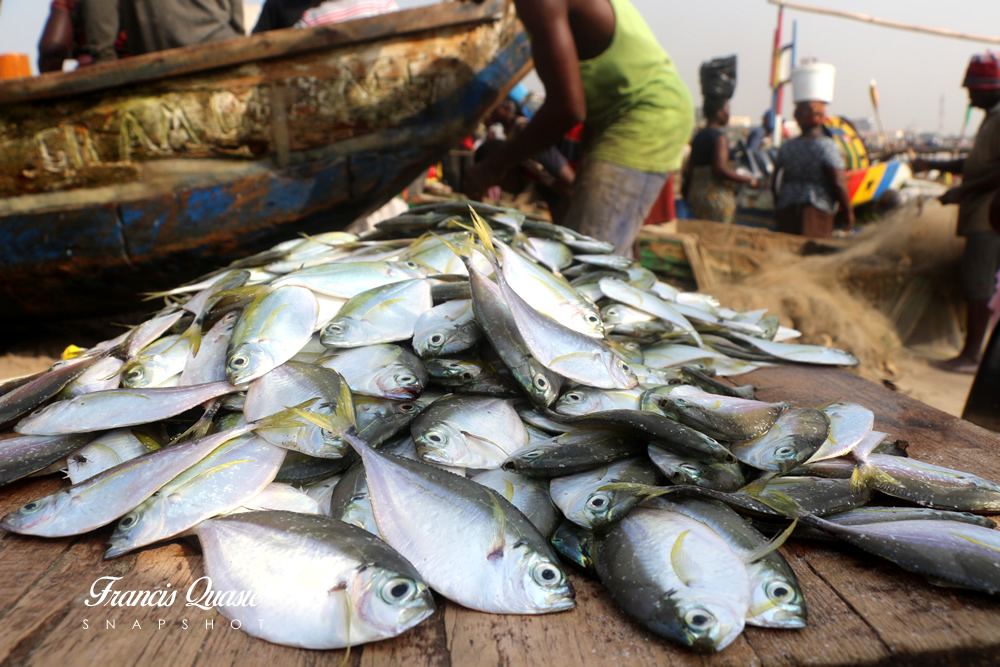Central Region Records Increase In Fish Production
- Home
- Central Region Records Increase In Fish Production

Central Region Records Increase In Fish Production

The Central Region has contributed about 49,752.00 metric tons of fish valued at GH¢389,335.00 out of a total of 628.617.53 metric tons of fish caught countrywide from January to November 2022.
The figure represents an increase of 33.24 a cent of the 471.798 metric tons recorded in 2021.
Additionally, on Aquaculture development, the Region contributed a total of 913.65 metric tons made up of 258 metric tons and 655.65 metric tons of Tilapia and Catfish respectively, which is 1.02 percent of the total aquaculture production nationwide.
Nationally, the total volume of marine fish landings grew by 20.53 percent from 326,867 metric tons in 2021 to 393,970 percent metric tons in 2022.
Dr. Peter Omega, the Central Regional Director of the Department of Agriculture disclosed this at the 38th Regional Farmer’s Day celebration held at Jukwa in the Twifo Hemang Lower Denkyira District to reward 30 outstanding farmers.
This celebration, which was on the theme: “Accelerating Agriculture Development through Value Addition”, was graced by Mrs Justina Marigold Assan, the Regional, a host of Metropolitan, Municipal, and District Chief Executives, traditional authorities, and farmers.
The awards ceremony was instituted to reward the nation’s hard-working and gallant farmers and fishers for their commendable and meritorious contributions to the nation’s food security.
Dr Omega said the Government through the Fisheries Commission had intensified support to train some fish farmers in the aquaculture sector as part of measures to address the rapid depletion of fish stock in the country’s marine space.
In line with that, he said some individuals had received support to reclaim some illegal mining sites for aquaculture projects, which were yielding positive results at Diaso in the Upper Denkyira West District.
Touching on the cocoa sector, Dr Omega said, a total of 383.73 hectares of Cocoa Swollen Shoot Disease infected farms had been removed since 2017.
With that, he said a total of 268.53 hectares representing 69.98% of the rehabilitated farms have been replanted with free plantain suckers, free hybrid cocoa seedlings, and free desirable economic shade trees that commensurate with the farm size.
The move was in tandem with the Region’s strategy to increase its output in the national tonnage of cocoa and distributed a total of 5,576,495 free hybrid cocoa seedlings and 170,425 desirable economic shade trees to some 8,707 cocoa farmers within the region.
The region subsequently, produced a total of 89,528.81 tons of dried cocoa beans compared to the previous year’s 135,858.50 tons.
Towards improving the market linkages of agricultural activities in the region, a total of 474,226 farmers and fishers have been linked to 173 Agricultural input dealers for input supply, while 55 aggregators and traders have been linked to farmers, processors, and consumers.
Similarly, the Department of Agriculture and Fisheries Commission created a sector database of 301 agro-processors, who are into cassava, oil palm, vegetables, coconut, ginger, maize, rice, sweet potato, poultry, piggery, and fish processing and had been linked to farmers and fishers for raw materials and traders and consumers.
On crop production, Dr. Omega announced that the production of agricultural commodities recorded a significant increase by the average of 2.5%.
“Maize production shows an increment from 326,625 in 2020 to 348,240 in 2021, rice-12,308 in 2020 to 16,246 in 2021, cassava -3,338,905 in 2020 to 3,540,553 in 2021, plantain- 278,256 in 2020 to 327,522 in 2021.
“Poultry production increased from 3,367,612 in 2020 to 3,586,507 in 2021, while sheep and goat increased from 894,612 in 2020 to 939,382 in 2021 and pigs from 51,777 to 53,045.
That represents a drop of 34.10% compared to the previous yield could be attributed mainly to the alternating bearing nature of the crop.
While celebrating farmers for their determination to maintain national food security, Dr Omega charged them to accept and improve on their technology through value addition.
They should accept give’s strategy on transforming the agricultural sector by upgrading the value chain—production, postproduction, and appropriate policies
He urged processors in planting materials and breeds of animals, farmers, and fishers are expected to add value to their products.
“Institutions and organizations are to add value to research findings, agriculture financing, extension delivery, product certification and regulation, and agriculture infrastructure development including irrigation, storage, and transport facilities.
“Packaging, processing, delivery, and fortifying of products like gari with orange flesh sweet potatoes which provide all the essential vitamins in our diets.
“Certification by the Food and Drugs Authority and the Ghana Standards Authority are forms of adding, value to food products since they go through their processes to ensure quality and safeguard public health agro-processing has emerged as one of the most attractive sectors for investment,” he advised.
For her part, Mrs Assan reiterated the government’s commitment to supporting farmers to maintain national food security.
She encouraged the youth to take advantage of the government’s interventions in the sector to improve their livelihoods and commended Canfed Ghana for supporting the farmers in the region.
Several gallant farmers were rewarded for their hard work to enable others to emulate them.
Source: GNA
Classic Ghana
Classic Ghana brings you into a fun world of arts, entertainment, fashion, beauty, photography, culture and all things in between. Let’s explore these together!


